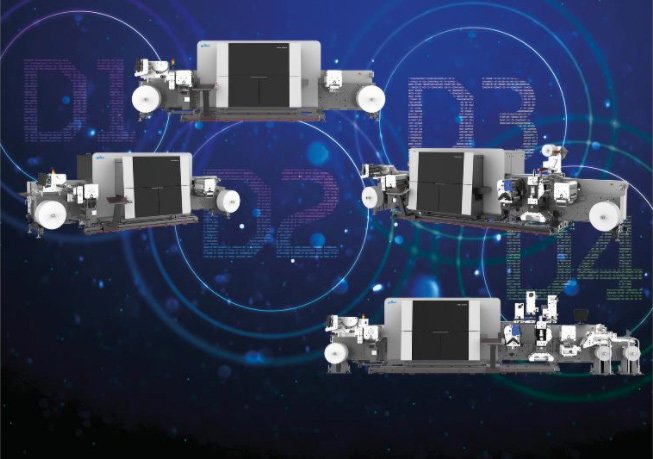
According to the latest Gallus press release, high productivity combined with perfect quality is the USP of the Gallus Labelfire. Nevertheless, to meet constantly changing customer demands, Gallus is launching what it calls the ‘Diamond Core Series.’ From now on, four models of the Gallus Labelfire are available, and clearly defined, and ostensibly tailored to distinct market requirements. Digital white with high opacity is an option available for all models.
The Diamond Core
The heart of each Gallus Labelfire is the digital print unit, the so-called ‘diamond core.’ This digital print unit enables high-quality 1200 x 1200 dpi UV inkjet printing with the proven Fujifilm Samba printheads. The excellent print results from the pinning (fixing) modules adapted for the inks and printheads. The simulation of the Pantone Plus color scale enables its print quality for spot colors. All four Labelfire Diamond Core series models maintain the 70 meters a minute production speed and the ability to print a variety of substrates, which is not surprising since the basic engine uses UV inks.
Gallus Labelfire D1 is 4-color, and D2, which is 7-color
Gallus describes the D1 and D2 models as the series’s inkjet workhorses, implying essential roll-to-roll reliability. With or without digital white, these are claimed to be suitable for all printing companies, which do not need inline finishing – in other words, no die-cutting station.
The Labelfire D1 is the 4-color entry-level machine system into the 1200 dpi digital printing and is ideally suited for commodity labels with changing small run lengths. The Labelfire D2 is the more expensive alternative with seven colors (CMYK plus gamut extension Green, Orange, and Violet) for highly challenging designs such as cosmetic and body care products – or whenever more precise color matching is an issue. With its seven colors, the D2 is said to enable up to 94% of the simulated Pantone Plus color scale.
Hybrid D3/D4 presses – future-oriented and more ambitious
Whether 4-color or 7-color, with or without digital white, the highly configured hybrid technology offers flexibility with integrated inline finishing and embellishing modules. The Labelfire D3, the UV inkjet press with four colors (CMYK), and the Labelfire D4 with seven colors (CMYK GOV) are both equipped with a flexo and a die-cutting unit for easy single-pass printing and finishing – from file to finished die-cut label in a single pass. In addition, as required, with either a laminating and or varnishing module or a cold foil unit, complex finished labels can be produced in minimal print runs.
“With the Gallus Labelfire Diamond Core Series, we offer a suitable range for all types of printers, regardless of their level of experience and scope of requirements,” explains Thomas Schweizer, head of Business Management at Gallus. “In addition, we offer a fully comprehensive service. With buying this machine, all maintenance work is included in the price for the first year of operation. After that, our customers can choose from three basic service packages with the option of flexible expansion, from the low-cost, basic rate to the all-round carefree package.”










